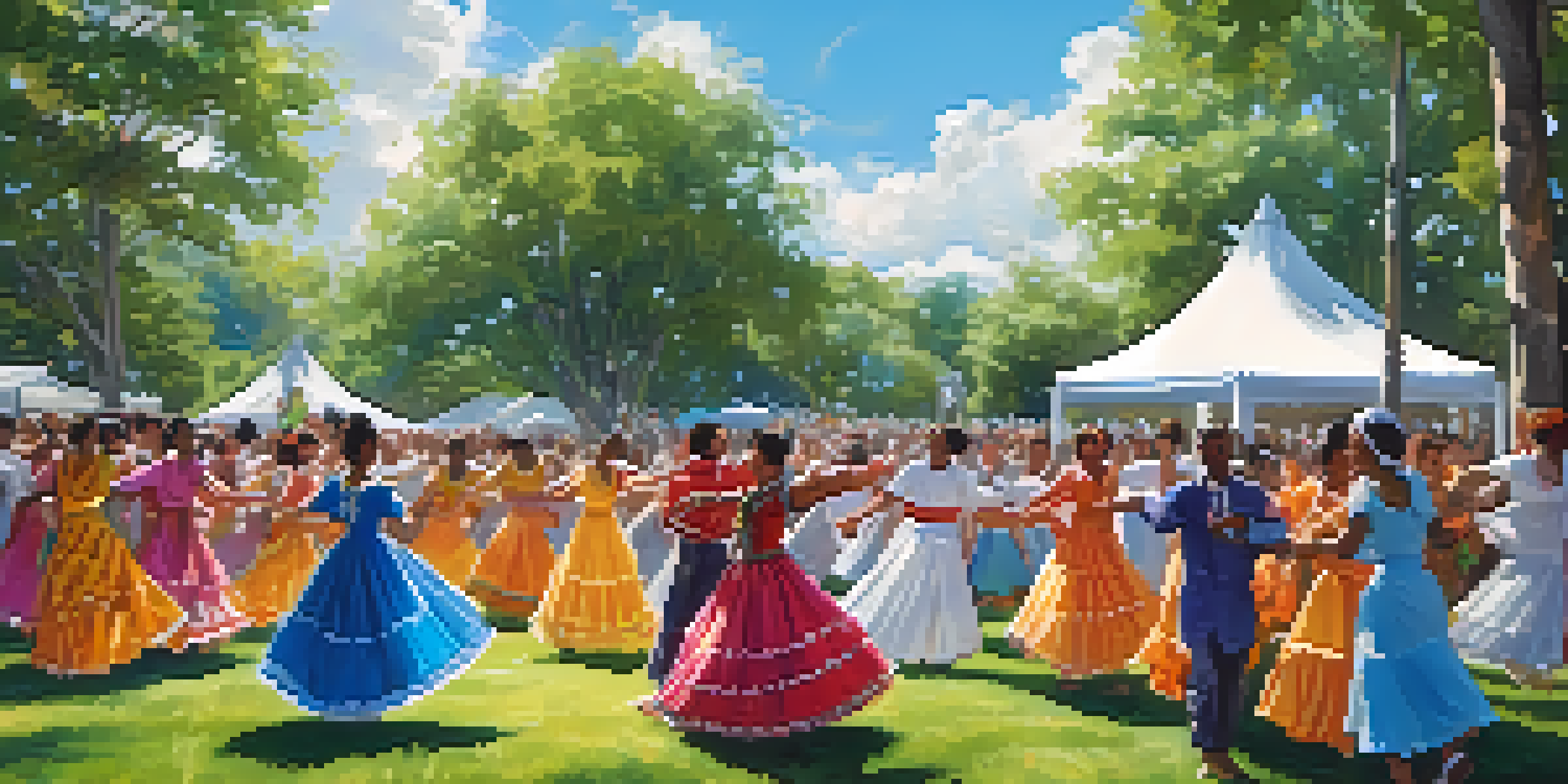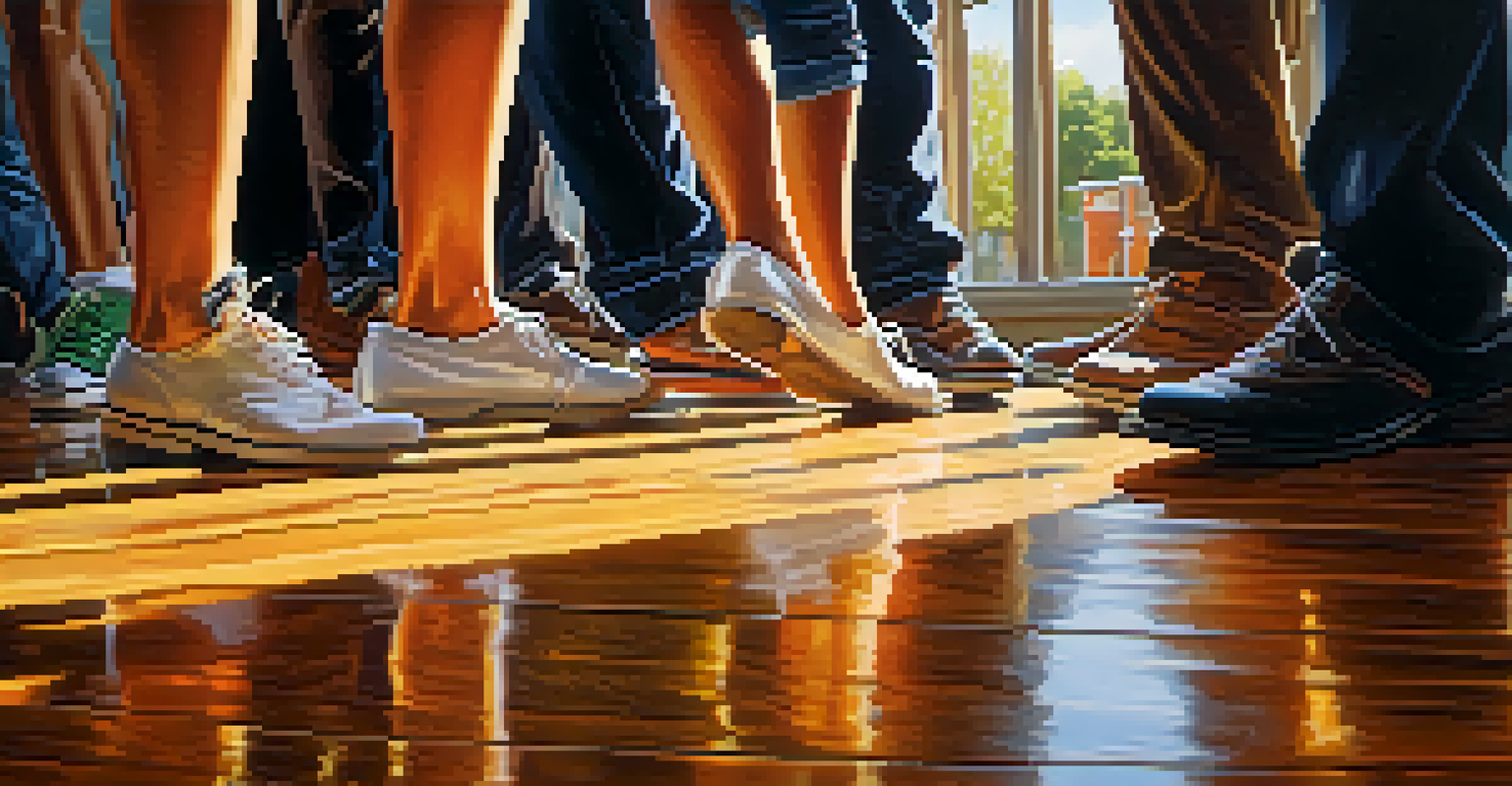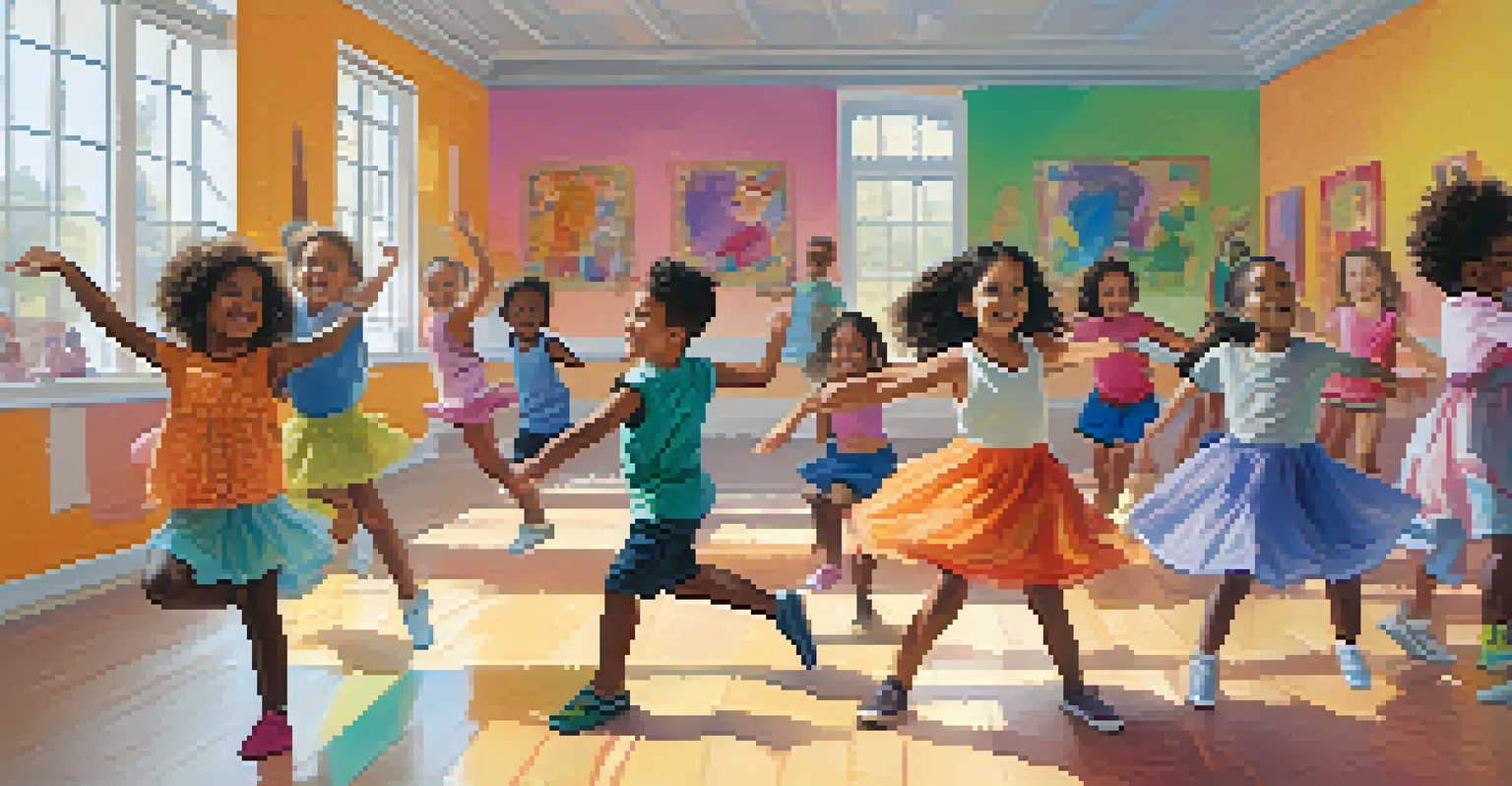Collective Movement: Dance and Community Resilience

The Power of Dance in Building Connections
Dance has a unique ability to bring people together, transcending language and cultural barriers. When individuals dance together, they share an experience that fosters a sense of belonging and community. This connection can be particularly powerful in times of hardship, as it creates a support network that encourages resilience.
Dance is the hidden language of the soul.
For example, consider a neighborhood hosting a dance event to celebrate their cultural heritage. Not only does this event allow individuals to express themselves, but it also reinforces community bonds, making everyone feel valued and included. The collective energy of dancing can uplift spirits, reminding everyone of their shared identity and strength.
Moreover, these connections formed through dance can lead to collaborative efforts in tackling community challenges. When people come together on the dance floor, they often find the courage to unite and advocate for change, further enhancing their resilience.
Dance as a Tool for Healing and Expression
Dance serves as a powerful means of emotional expression, allowing individuals to communicate feelings that might be difficult to put into words. In community settings, this expressive aspect can be particularly healing for those dealing with trauma or loss. By moving together, individuals release pent-up emotions, fostering a collective healing process.

Take, for instance, a community dance workshop designed for survivors of natural disasters. Participants may find solace in moving their bodies, sharing their stories through movement, and forming bonds with others who have similar experiences. This shared expression can create a safe space where vulnerability is embraced, ultimately enhancing emotional resilience.
Dance Builds Community Connections
Through shared dance experiences, individuals foster a sense of belonging and resilience in their communities.
In this way, dance doesn't just entertain; it becomes a therapeutic outlet that nurtures mental well-being and strengthens community ties. The act of dancing together can serve as a reminder that healing is a journey best undertaken with others.
Creating Inclusive Spaces Through Collective Movement
Incorporating dance into community initiatives encourages inclusivity and participation. When dance events are designed to welcome all ages and backgrounds, they create opportunities for diverse groups to interact and collaborate. This sense of inclusivity is essential for building a resilient community, as it values every individual’s contribution.
We should consider every day lost on which we have not danced at least once.
For instance, think about a neighborhood hosting a community dance-off that invites residents from different cultures to showcase their traditional dances. Not only does this event celebrate diversity, but it also fosters mutual respect and understanding among participants. By engaging with one another through dance, community members can break down barriers and build lasting relationships.
Creating such inclusive spaces through collective movement empowers individuals to feel seen and heard, reinforcing their commitment to the community. This sense of belonging is a cornerstone of resilience, enabling communities to thrive even in challenging times.
The Role of Dance in Cultural Preservation
Dance is often a reflection of cultural heritage, acting as a vessel for storytelling and tradition. By participating in dance, community members not only celebrate their identity but also pass down their cultural narratives to future generations. This preservation is vital for fostering resilience, as it instills a sense of pride and continuity within the community.
Consider traditional dance forms that have been practiced for generations. When communities gather to share these dances, they reinforce their shared history and values. This connection to the past empowers individuals, providing them with the strength to face contemporary challenges while honoring their roots.
Healing Through Expressive Movement
Dance serves as a therapeutic outlet, allowing individuals to express emotions and heal collectively.
Thus, dance becomes a living archive of a community's history, contributing to its overall resilience. By embracing and preserving their cultural expressions through movement, communities can draw on their rich heritage to navigate the future.
Empowering Youth Through Dance Initiatives
Youth engagement is crucial to the resilience of any community, and dance initiatives can play a significant role in this process. By offering dance programs for young people, communities can provide them with skills, confidence, and a sense of belonging. These initiatives not only keep youth active but also connect them with mentors and peers.
For example, a local dance troupe that includes youth from various backgrounds can foster creativity and collaboration. As they learn to work together, they build friendships and develop a sense of responsibility towards one another and their community. This empowerment can lead to a new generation of leaders who value cooperation and resilience.
Ultimately, investing in youth through dance creates a ripple effect, as empowered individuals contribute positively to their surroundings. When young people feel valued and connected, they are more likely to invest in their community's future.
Dance as a Catalyst for Social Change
Collective movement through dance can serve as a powerful form of activism, raising awareness about social issues while fostering community resilience. When dance is used as a platform for expression, it can highlight injustices and inspire change. This form of artistic activism encourages communities to come together and advocate for their rights and well-being.
For instance, flash mobs or choreographed performances addressing social issues can create impactful moments that resonate with audiences. These events not only engage participants but also draw attention from the wider community, sparking conversations and encouraging action. The combination of movement and message can be a potent tool for social transformation.
Youth Empowerment via Dance Programs
Engaging youth in dance initiatives cultivates skills and confidence, creating a new generation committed to community resilience.
By harnessing the collective energy of dance, communities can amplify their voices and challenge the status quo. This active engagement in social issues not only strengthens community bonds but also builds resilience in the face of adversity.
The Future of Dance and Community Resilience
As we look to the future, the role of dance in fostering community resilience is more important than ever. With the challenges posed by modern society, including social isolation and economic struggles, dance offers a joyful and unifying outlet. Communities that embrace collective movement will likely find innovative ways to support one another.
Emerging technologies, such as virtual dance platforms, can expand access to dance programs, allowing communities to connect regardless of geographical boundaries. This evolution opens new doors for collaboration, creativity, and resilience, ensuring that the spirit of dance continues to thrive in diverse settings.

Ultimately, the future of dance as a tool for community resilience hinges on our ability to adapt and innovate. By prioritizing collective movement, we can cultivate stronger, more connected communities that are ready to face whatever challenges lie ahead.